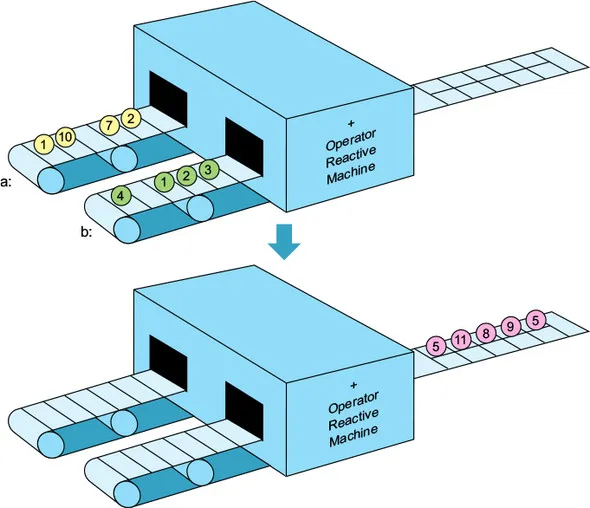
- 344 pages
- English
- ePUB (mobile friendly)
- Available on iOS & Android
Rx.NET in Action
About this book
Summary Rx.NET in Action teaches developers how to build event-driven applications using the Reactive Extensions (Rx) library.Purchase of the print book includes a free eBook in PDF, Kindle, and ePub formats from Manning Publications. About the Technology Modern applications must react to streams of data such as user and system events, internal messages, and sensor input. Reactive Extensions (Rx) is a.NET library containing more than 600 operators that you can compose together to build reactive client- and server-side applications to handle events asynchronously in a way that maximizes responsiveness, resiliency, and elasticity. About the Book Rx.NET in Action teaches developers how to build event-driven applications using the Rx library. Starting with an overview of the design and architecture of Rx-based reactive applications, you'll get hands-on with in-depth code examples to discover firsthand how to exploit the rich query capabilities that Rx provides and the Rx concurrency model that allows you to control both the asynchronicity of your code and the processing of event handlers. You'll also learn about consuming event streams, using schedulers to manage time, and working with Rx operators to filter, transform, and group events. What's Inside
- Introduction to Rx in C#
- Creating and consuming streams of data and events
- Building complex queries on event streams
- Error handling and testing Rx code
About the Reader Readers should understand OOP concepts and be comfortable coding in C#. About the Author Tamir Dresher is a senior software architect at CodeValue and a prominent member of Israel's Microsoft programming community. Table of Contents
PART 1 - GETTING STARTED WITH REACTIVE EXTENSIONS
- Reactive programming
- Hello, Rx
- Functional thinking in C#
PART 2 - CORE IDEAS
- Creating observable sequences
- Creating observables from.NET asynchronous types
- Controlling the observer-observable relationship
- Controlling the observable temperature
- Working with basic query operators
- Partitioning and combining observables
- Working with Rx concurrency and synchronization
- Error handling and recovery
APPENDIXES
- Writing asynchronous code in.NET
- The Rx Disposables library
- Testing Rx queries and operators
Frequently asked questions
- Essential is ideal for learners and professionals who enjoy exploring a wide range of subjects. Access the Essential Library with 800,000+ trusted titles and best-sellers across business, personal growth, and the humanities. Includes unlimited reading time and Standard Read Aloud voice.
- Complete: Perfect for advanced learners and researchers needing full, unrestricted access. Unlock 1.4M+ books across hundreds of subjects, including academic and specialized titles. The Complete Plan also includes advanced features like Premium Read Aloud and Research Assistant.
Please note we cannot support devices running on iOS 13 and Android 7 or earlier. Learn more about using the app.
Information
Part 1. Getting started with Reactive Extensions
Chapter 1. Reactive programming
- Being reactive
- Thinking about events as streams
- Introducing Reactive Extensions (Rx)
1This book is about reactive programming and not about functional reactive programming (FRP). FRP can operate on continuous time, whereas Rx can operate only on discrete points of time. More info can be found at the FRP creator’s keynote, http://mng.bz/TcB6.
1.1. Being reactive
int a = 2; int b = 3; int c = a + b; Console.WriteLine("before: the value of c is {0}",c); a=7; b=2; Console.WriteLine("after: the value of c is {0}",c); before: the value of c is 5 after: the value of c is 5
before: the value of c is 5 after: the value of c is 9
Figure 1.1. A reactive representation of the function c = a + b. As the values of a and b are changing, c’s value is changing as well. When a is 7 and b is 2, c automatically changes to 9. When b changes to 1, c becomes 8 because a’s value is still 7.

1.1.1. Reactiveness in your application
Table of contents
- Copyright
- Brief Table of Contents
- Table of Contents
- Foreword
- Preface
- Acknowledgments
- About this Book
- About the Author
- About the Cover Illustration
- Part 1. Getting started with Reactive Extensions
- Part 2. Core ideas
- Appendix A. Writing asynchronous code in .NET
- Appendix B. The Rx Disposables library
- Appendix C. Testing Rx queries and operators
- Catalog of Rx operators
- Index
- List of Figures
- List of Tables
- List of Listings